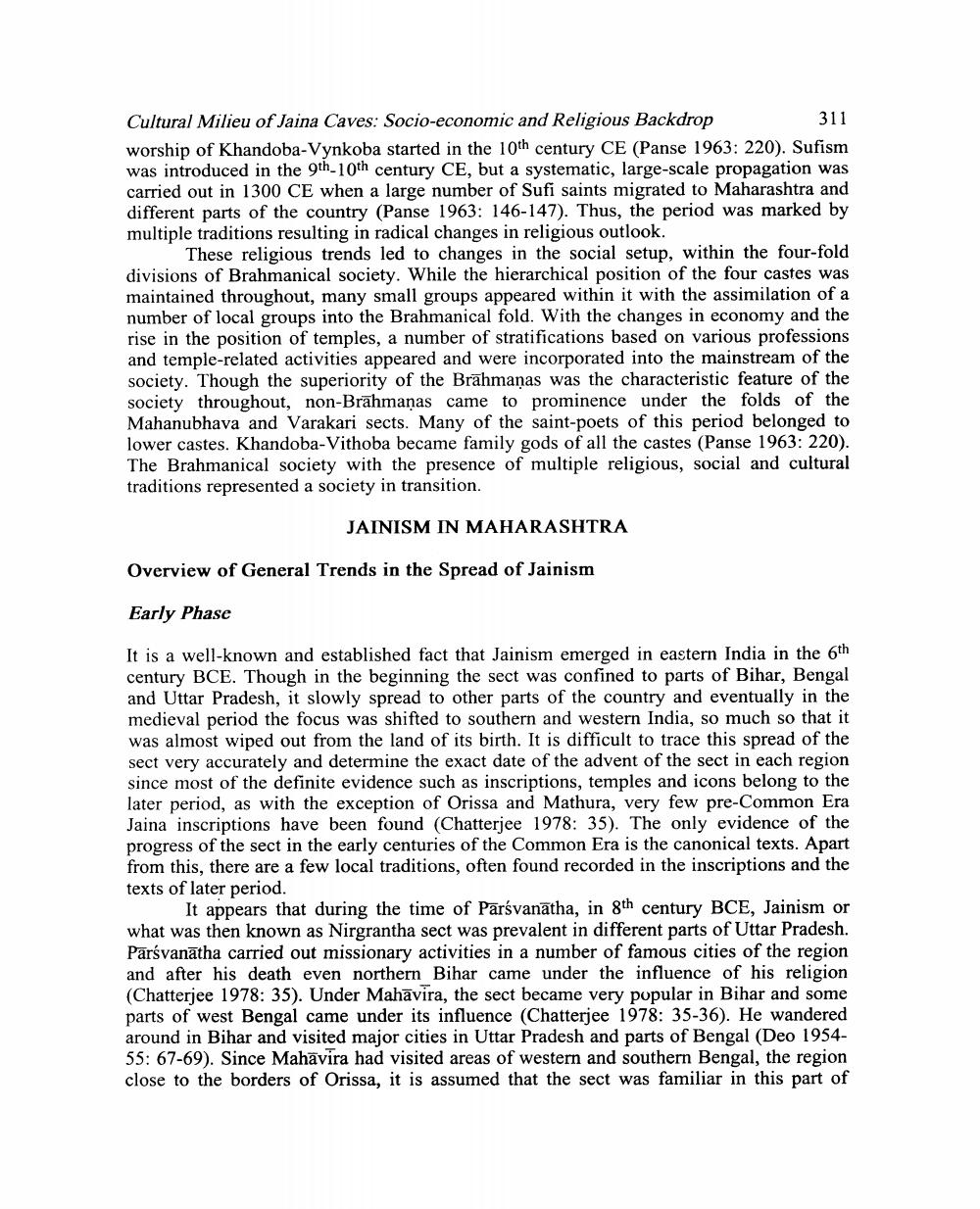________________
Cultural Milieu of Jaina Caves: Socio-economic and Religious Backdrop
311 worship of Khandoba-Vynkoba started in the 10th century CE (Panse 1963: 220). Sufism was introduced in the 9th 10th century CE, but a systematic, large-scale propagation was carried out in 1300 CE when a large number of Sufi saints migrated to Maharashtra and different parts of the country (Panse 1963: 146-147). Thus, the period was marked by multiple traditions resulting in radical changes in religious outlook.
These religious trends led to changes in the social setup, within the four-fold divisions of Brahmanical society. While the hierarchical position of the four castes was maintained throughout, many small groups appeared within it with the assimilation of a number of local groups into the Brahmanical fold. With the changes in economy and the rise in the position of temples, a number of stratifications based on various professions and temple-related activities appeared and were incorporated into the mainstream of the society. Though the superiority of the Brāhmaṇas was the characteristic feature of the society throughout, non-Brahmanas came to prominence under the folds of the Mahanubhava and Varakari sects. Many of the saint-poets of this period belonged to lower castes. Khandoba-Vithoba became family gods of all the castes (Panse 1963: 220). The Brahmanical society with the presence of multiple religious, social and cultural traditions represented a society in transition.
JAINISM IN MAHARASHTRA
Overview of General Trends in the Spread of Jainism
Early Phase
It is a well-known and established fact that Jainism emerged in eastern India in the 6th century BCE. Though in the beginning the sect was confined to parts of Bihar, Bengal and Uttar Pradesh, it slowly spread to other parts of the country and eventually in the medieval period the focus was shifted to southern and western India, so much so that it was almost wiped out from the land of its birth. It is difficult to trace this spread of the sect very accurately and determine the exact date of the advent of the sect in each region since most of the definite evidence such as inscriptions, temples and icons belong to the later period, as with the exception of Orissa and Mathura, very few pre-Common Era Jaina inscriptions have been found (Chatterjee 1978: 35). The only evidence of the progress of the sect in the early centuries of the Common Era is the canonical texts. Apart from this, there are a few local traditions, often found recorded in the inscriptions and the texts of later period.
It appears that during the time of Parsvanātha, in gth century BCE, Jainism or what was then known as Nirgrantha sect was prevalent in different parts of Uttar Pradesh. Parsvanātha carried out missionary activities in a number of famous cities of the region and after his death even northern Bihar came under the influence of his religion (Chatterjee 1978: 35). Under Mahāvira, the sect became very popular in Bihar and some parts of west Bengal came under its influence (Chatterjee 1978: 35-36). He wandered around in Bihar and visited major cities in Uttar Pradesh and parts of Bengal (Deo 195455: 67-69). Since Mahavira had visited areas of western and southern Bengal, the region close to the borders of Orissa, it is assumed that the sect was familiar in this part of




